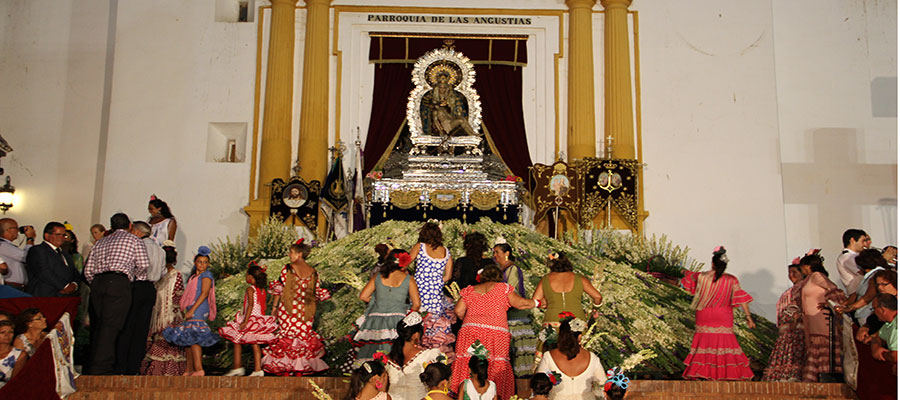- Details
-
Published: Monday, 02 February 2015 21:03
-
Written by Michael Halligan
Carnival Ayamonte
"Ayamonte give Rio a good run for their money as everyone takes to the streets"
No sooner have the Christmas lights come down and in true Spanish style we are upon the first major festival of the year Carnival.
Carnival is basically the last big celebration before Lent begins. Lent, which lasts for 40 days (excluding Sundays), starts on Ash Wednesday (which in 2015 is Feb 18th) and finishes on Easter Sunday with the resurrection of Jesus Christ.
Lent was typically a time of abstinence and penance with some people giving up what they deemed as luxuries. Chocolates, sweets cigarettes and alcohol were always candidates for sacrifice during lent.
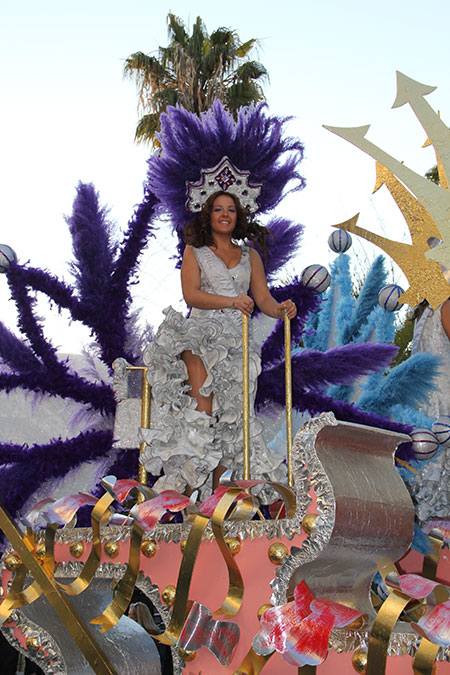 Children often gave up sweets, with Easter eggs being the treat at the end for their sacrifice. Nowadays however, we seem to be less likely to deprive ourselves of any luxury and I include myself in that statement. I can however thank the year I went off sugar in my tea and after the 40 days I never went back.
Children often gave up sweets, with Easter eggs being the treat at the end for their sacrifice. Nowadays however, we seem to be less likely to deprive ourselves of any luxury and I include myself in that statement. I can however thank the year I went off sugar in my tea and after the 40 days I never went back.
Carnival in the south of Spain is basically the last party before lent begins. In Andalucía it has a very strong musical theme; with musical competitions take place in Cadiz, Huelva, Isla Cristina and Ayamonte to name but a few.
The musical groups which compete in Carnival are not your common street band, but usually a group of friends or co-workers who compose a song that treats a common theme with irony and sarcasm. Politicians, the health service, the Euro, Ireland, the economic crisis are common topics that will undoubtedly come in for a severe pasting this year.
Ayamonte Carnival
The festival on the street may not be like Rio de Janeiro, simply because it is winter here, but the parades (Gran Cabalgata de Carnival) are well worth taking the time out to see. And for those of you who venture out to socialize during Carnival in Ayamonte some sort of a costume is expected.
Carnival ends on Ash Wednesday with the Burial of the Sardine (Entierro de la Sardina), which is usually a giant cardboard sardine which is set on fire at the end of the parade. The sardine represents Judas, the disciple who betrayed Jesus Christ.
The majority of the activities in Ayamonte are based around the Cardenio Theatre where the musical competition takes place and the whole street is closed off for the Carnival week. There are also some parades in fancy dress by the local schools with the Gran Cabalgata being the biggest parade of them all.
To find out what’s on and where, have a look at our events guide closer to the dates stated above as the official times are not published until nearer the occasion.
- Details
-
Published: Monday, 02 February 2015 21:01
-
Written by Michael Halligan
Semana Santa /Easter Week
"Ayamonte's busiest week of the year"
Semana Santa, Easter week is the most important week in the Catholic calendar more so than Christmas. In Spain with a predominant Catholic population the celebration in religious terms takes to the streets in the form of processions.
There are many famous processions throughout Spain, but there are always four which almost any Spanish person will name when asked and they are Valladolid, Zamora, Málaga and Seville.
Each of these famous cities have their own particular way of celebrating Easter, but for simple climatic reasons the processions in Andalucía have a more numerous following in both people within the procession and those watching on.
Viewing a procession for the first time, whether you are Catholic or not, is an experience that you will never forget. I recall seeing my first procession in 1995 in Valladolid and there the processions are carried out in a more sober fashion and people watch on in almost complete silence. Andalucía on the other hand is completely different with more bands leading the processions and the spectators applauding and screaming out compliments as a throne passes.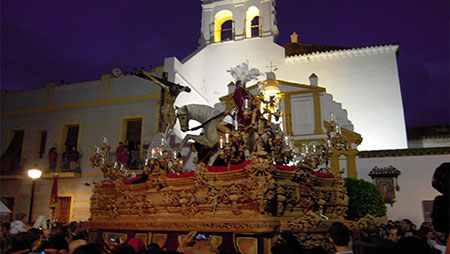
Seville is known as the oven of Spain but it is during Easter week it transforms itself into something special that the words that I am about to write below will never do justice. The phrase “you have to be there to understand” is the perfect explanation for Seville in Semana Santa.
The sound of thousands of people moving in unison, the flickering light given off by hundreds of candles carefully placed around a religious image, the strong waft of incense which seems to penetrate your nostrils coupled with the sweet smell of candle wax and thousands of flowers, the lift of hundreds of kilos in weight in one clean movement by the costaleros, the shear skill of manoeuvring these immense thrones ,with their invaluable works of art, through the narrow streets of Seville and the solitary sound of a flamenco singer who perched on a balcony sings a Saeta to the passing procession as if their very life depended on it. An experience to be lived and not read about!
No sooner has Christmas finished and the Hermandades / Cofradías are practicing for the processions for Semana Santa, Easter week which in 2013 is from Palm Sunday March 24 to Easter/ Resurrection Sunday March 31.
First of all, I would like to introduce some of the words that are part and parcel of Semana Santa.
Cofradías / Hermandades: These are religious brotherhoods to which each person in the procession belongs and each brotherhood has their own distinctive dress or emblem.
Costalero: These are the people who carry the thrones or religious images during the procession.
Nazarenos: These are members of the brotherhoods who parade in front of the thrones normally dressed in a tunic, cape and capirote or cucchurcho
Capirote or Cucurucho: The pointed hats worn by the Nazarenos which cover the face with only two holes for the eyes. The shape is very much like a dunce’s cap and the expression “ser tonto de capirote” an utter fool is also used in Spanish.
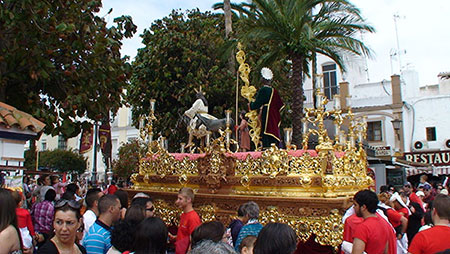 Saeta: a religious song which originates from when nuns in convents in 16th Century sung to the passing processions, but in late 1800’s was adapted by flamenco singers to the form in which it exists today.
Saeta: a religious song which originates from when nuns in convents in 16th Century sung to the passing processions, but in late 1800’s was adapted by flamenco singers to the form in which it exists today.
The processions only take place if there is no rain, as the works of art that are carried by the costaleros are invaluable. Should it start to rain while a procession is in progress, the works of art take refuge in the nearest church. Luckily the weather in the South of Spain is normally good, but when it does rain it is not uncommon to see grown men weep in frustration as their brotherhood is denied the chance to carry their thrones to the city of Seville.
Semana Santa in Ayamonte
Ayamonte with its narrow cobble streets and effigies built on thrones that are hoisted high by the Costaleros , members of the religious brotherhood who carry the effigies on their shoulders, also has something very special. The dedication, the skill and sheer effort to carry all that weight for hours is enough to gain the respect from any spectator. On occasions they only have millimetres to manoeuvre the thrones and remembering that these effigies are centuries old and of incalculable value, it only adds to the occasion.
Here is the breakdown of the brotherhoods involved in the processions in Ayamonte,please note that the bands stated are subject to change as this is the 2010 program.
Palm Sunday:
Hermandad del Señor Triunfante en su entrada en Jerusalén, Cristo Amor y Nuestra Señora de la Salud. Founded in 1918.
Cristo Amor , dating from XVIII century ( purple iris)
Virgen de la Salud ,1943, (iris & white roses)
Señor Triunfante, 1943, ( red carnations)
Holy Monday
Real Hermandad de Jesús Cautivo, Cristo de la Buena Muerte y Maria Santisima del Rosario. Founded in 1971
Jesús Cautivo, 1973, (red carnations), accompanied by Cristo de la Buena Muerte band.
Cristo de la Buena Muerte, dating from XVI century (Blue-bird rose of sharon) accompanied by Cornet & Tambor Ntra. Sra. del Rosario Band.
Virgen de la Rosario, 1972, (Ivory coloured roses)
Holy Tuesday
Real, Antigua, ilustre Y Fervorosa Hermandad y Cofradía de Nazarenos de la Sagrada Lanzada y Maria Santísima de la Esperanza del Mar. Founded in 1918.
Sagrada Lanzada, ( red roses & carnations)
Holy Wednesday
Hermandad y Cofradía del Santísimo Cristo de la Victoria, Nuestro Padre Jesús de la Pasión y Maria Santísima de la Paz. Founded in 1940.
Padre Jesús de la Pasión, 1942, (red carnations) accompanied by Cornet & Tambor Virgen de la Salud band ( Huelva)
Maria Santísima de la Paz, ( white carnations) accompanied by Ntra. Snra. de la Soledad Band (Sevilla)
Holy Thursday
Real, Ilustre y Muy Antigua Hermandad Sacramental del Salvador 1718 y Cofradía de Penitencia de la Oración en el Huerto 1918, Nuestro Padre Jesús Caído y Nuestra Señora de la Amargura.
Oracion en el Huerto, accompanied Cristo de la Buena Muerte band
Ntro. Padre Jesús Caído accompanied by Cornet & Tambor band ( Bilbao)
Ntra.Sra. de la Amargura accompanied by Cristo de Perdon band ( Seville)
Good Friday (Early Morning)
Cofradia de Nuestro Padre Jesús Nazareno Y Maria Santisima del Socorro founded between 1596 and 1604.
Nuestro Padre Jesús Nazareno, (red carnations)
Maria Santísima del Socorro, ( orquids )
This procession starts at 2am on Calle Galdames and ends at 10am in Capilla del Socorro. This procession does not have a musical band but it is the village people that accompany the Christ & Maria.
Good Friday
Pontificia, Real e Ilustre Hermandad Sacramental y Archicofradia de Nazarenos del Santo Entierro, Descendimiento de Cruz y Nuestra Señora del Mayor Dolor founded in 1892
Descendimiento de Cruz ,1948, accompanied by Cornet & Tambors Virgen de la Salud band ( Huelva)
Nuestra Señora del Mayor Dolor, 1942, accompanied by Villablanca Municipal band.
Good Friday
Muy Antigua, Real e Ilustre Hermandad Franciscana de Penitencia de la Vera Cruz, Santo Entierro de Cristo y Maria Santisima en su Soledad. Founded in 1550.
Cristo de la Vera Cruz, 1941, (purple iris), Cornet & Tambor band (Sevilla)
Cristo Yacente, XVI century, Bollullos del Condado Philharmonic band
Maria Santisima en su Soledad, 1937, (white flowers & bitter orange white flower)
Easter Sunday
Hermandad de Jesús Resucitado y Maria Santísima de la Victoria. Founded in 1990
Jesús Resucitado, 1991, (red carnations) accompanied by Cornet & Tambor band.
Maria Santísima de la Victoria, 1996, (red roses & carnations) accompanied by Maestro Tejera band ( Seville)
- Details
-
Published: Monday, 02 February 2015 20:54
-
Written by Michael Halligan
The Angustias Festivals has many different meanings and attractions not only for local people but also for visiting tourist and the newly relocated resident. The Festival lasts for six days and always starts the same way with the Samouco band and Ayamonte’s town band arriving on the ferry from Portugal.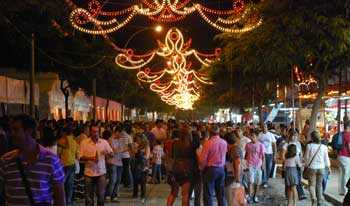
Hundreds of people congregate on the ferry dock and they march into the Plaza Laguna behind the bands. The town hall dignitaries then give a speech and to both the national anthem and the Ayamonte anthem declare the festival open. Then it is off to the fairground where the switching on of the festival lights signals that the partying can truly begin.
The patron Saint of Ayamonte is Nuestra Señora de las Angustias and September 8 is a bank holiday in Ayamonte town. Many people know about the La Angustias festivals and of course the Angustias Church in the centre of town but not everyone knows the story behind the La Angustias sculpture.
The sculpture was found on the night of January 11, 1756 by the Coritos brothers who were fishing in San Bartolomé marshes just off Villa Real de San Antonio, Portugal. They were in Portuguese waters when their boat almost capsized as they hauled in their nets only to find a treasure chest rather than fish. The Portuguese costal authorities were alerted by the struggle that the Spanish sailors were having and approached the boat.
The Coritos brothers would not hand over the find to the Portuguese Costal authorities but invited them to Ayamonte port to witness the opening of what they thought was going to gold or jewels.
When they opened the chest they found the sculpture of what is now known as Nuestra Señora de la Angustias and Jesus. The Portuguese Costal guard reported the find to the authorities and claimed the find for Portugal.
The authorities in Ayamonte claimed as it was Spanish sailors who found the treasure it should stay in Ayamonte. What followed was a debate which ended with Ayamonte agreeing to hand over the sculpture to Portugal in May 1756.
The day set for the handover was like any other May Day in Costa de la Luz but when the sculpture was loaded onto a boat to be handed over, a storm blew in, with winds and waves coming up the Guadiana River making it impossible to handover the sculpture. A new date was set but once again the hand over was thwarted when another storm blew in. Finally on the third attempt when yet another storm made the hand over impossible, the Portuguese authorities gave in to the pleas of the people of Ayamonte who said the sculpture did not want to leave Ayamonte, and agreed to leave the sculpture in Spain.
To this day many Portuguese people come to Ayamonte to see the Angustias sculpture and it was a Portuguese sculptor José da Silva who restored the sculpture when it was badly damaged in 1936.
Like all Spanish festival both eating, drinking and partying seem to blur into to one as the hours and days of the festival go by but there is one part of the festival that is a must for anyone trying to get the real sense behind Las Angustias Festival and that is the Offering of flowers ( Ofrenda de flores) to the Virgin on the Eve of Angustias (September 7th).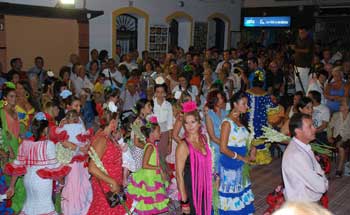
From 8 pm onwards all the local people start to meet in their nearest square whether it be Plaza San Francisco, Plaza Cornacion or Plaza España, they make their way to the Angustias church. It is not uncommon to see three generations of the same family dressed in similar pay homage to the Virgin. The streets are literally alive, there is a buzz around the town and the whole atmosphere is electric its yet another of those moments that you have to be here to understand it.
A full program is posted on the events guide nearer the start of the festival, including bands, concerts, competitions, bullfights, exhibitions and firework displays.

 Children often gave up sweets, with Easter eggs being the treat at the end for their sacrifice. Nowadays however, we seem to be less likely to deprive ourselves of any luxury and I include myself in that statement. I can however thank the year I went off sugar in my tea and after the 40 days I never went back.
Children often gave up sweets, with Easter eggs being the treat at the end for their sacrifice. Nowadays however, we seem to be less likely to deprive ourselves of any luxury and I include myself in that statement. I can however thank the year I went off sugar in my tea and after the 40 days I never went back.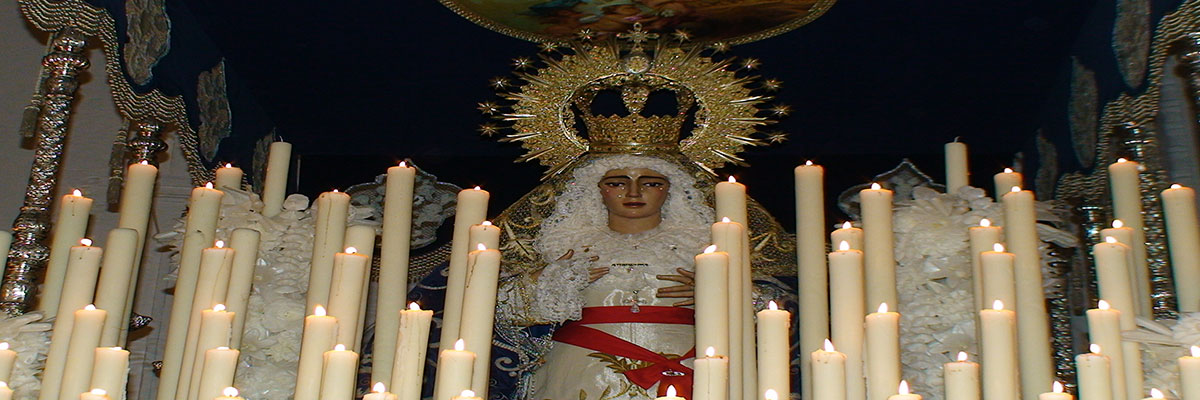

 Saeta: a religious song which originates from when nuns in convents in 16th Century sung to the passing processions, but in late 1800’s was adapted by flamenco singers to the form in which it exists today.
Saeta: a religious song which originates from when nuns in convents in 16th Century sung to the passing processions, but in late 1800’s was adapted by flamenco singers to the form in which it exists today.